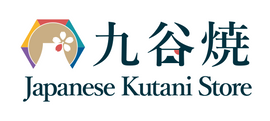Kutani is the Japanese word for Nine Valleys. It is the name of a village, an area where the two characters ‘Ku’ is nine, and ‘tani’ is valley. Kutani is an ancient place where pottery was made in 1655. Since this is the place where Kutani art originated, every piece is marked with the Kutani symbol. No one factory or manufacturer marks these Kutani pieces with their own symbols.
Artists who were experts with the Kutani style of porcelain decoration often moved around Japan. When they created art pieces, they would mark them according to the place of creation. This is the reason why some pieces of the Kutani ware have Yokohama and Kobe marks. However, some pieces only have the artist’s mark without a specific location. This can create confusion in finding the origin of the Kutani piece.
Find your favorite Kutani ware from all products list of Japanese Kutani Store!!
History of Kutani Porcelain
Kutani porcelain was first discovered back in 1655 in the Kutani Village. During the rule of Lord Maeda Toshiharu of the Daishoji Clan, porcelain stones were found. Whereupon, Goto Sajiro was sent to the Arita Village to learn the art of Kutani pottery. This village is situated in the Hizen province where the first Kutani pieces were created. The pieces from this area and era are called Ko-Kutani that are extremely rare today.
Kutani Art in the 1800s
The Kutani art went through tough times and died down due to financial problems. However, in the 1800s, it was revived and every piece since then is called Kutani. Ko-Kutani refers to old Kutani while Kutani is the modern version.
After the restoration, a fire destroyed the kiln based in Kasugayama in the Kanazawa City a few years later. Between 1806 and 1820, Honda Sadakichi built a set of new kilns in Wakasugi. The intention this time was to revive the old Kutani style of pottery.
Later in 1823, a set of Yoshidaya Kilns were built in the Daishoji district, which is was the original site of Ko-Kutani. This time, the focus was on the manufacturing of commercial porcelain that included printed designs. The production from this kiln still continues to date and what we commonly see in the industry. Kutani Shoza is the most popular one today as it has gaudy enamels and gold brocade in the designs.
Export of Kutani Products
Starting with the Meiji period in the 1868 up till 1912, all the Kutani porcelain was produced for export. All the Kutani was manufactured in the Shoza style and what we see today is the same. The Shoza Style mark on most Kutani porcelain products bears the mark and some have Yoshida Kiln marked at the bottom. This shows that these pieces were made back in the 19th century.
Get 10% discount code of Japanese Kutani Store for sale from here.
Birds of Kutani Porcelain
Birds are the most commonly used motif in Kutani art. Birds specially appear in the Yokohama era of the 1930s. It was called Toshiro Shoten, and bore the mark as well. The bird motifs on porcelain were created using the light ink wash technique. Any Kutani piece you see today highly suggests that it is the Yokohama style of the export era. Interestingly, Kamimoto also produced pieces that are similar to Tashiro and gained much popularity.
The time period starting at 1603 to 1867 is the Edo period and does not have any other well-defined time frame. However, all the pieces are Kutani and in few, only the names appear. All the names appear randomly and there is no noticeable pattern. Nevertheless, the modern pieces do have a mark of Kutani. This is the only way to identify an original Kutani piece.
Find your favorite Kutani ware from all products list of Japanese Kutani Store!!
Kutani Ware Identifications
When looking for Kutani marks on any piece, keep in mind that Kutani is a place and not a factory or a single manufacturer. Kutani is a valley with several workshops called Kilns where these Japanese pieces were made. Therefore, most pieces bear the Kutani mark at the bottom.
Ever since Japan opened up to western trade, finding Kutani pieces and creating your own collection has become quite easy today. Usually, the Shoza style of Kutani ware is more commonly available. The older a Kutani piece is, the higher it is valued for although you can find modern copies of the older version. Then again, a copy is still a copy – no matter how good the quality is!
Kutani Marks
The marks at the bottom of each Kutani piece are often hand-painted. However, you will also find pieces where an artist decides to engrave or emboss a mark at the bottom. Impressed and incised marks are not as common as hand-painted ones.
Many Kutani pieces do not have any mark or are simply marked Kutani. Marks that are printed in low grade commonly signify a post war or inter war production. This is also a way of understanding its originality. Some generic marks are listed below:
- Kutani: 九谷
- Kutani Ware or Kutani yaki: 九谷焼
- Kutani Marked or Kutani sei: 九谷製
- Kutani Created or Kutani zo: 九谷造
- Kutani Yokohama or Kutani made in the Yokohama era: 九谷 横浜
Kutani Ware Examples


This large pair of Japanese Kutani ware vases shows the Japanese culture and its history. The fine black line work and detailed painting of figures makes this a unique set. Also dating back to the 19th century Meiji period, the red script mark says Kutani at the bottom.
Source: https://www.bluecherryantiques.co.uk/pages/japanese-kutani-ware-identification-marks
We receive lots of request to support identifying whether it is kutani-ware or not? We hope to understand it is difficult to identify without seeing it directly. So we can not support those request.
See All Kutani Wares on Japanese Kutani Store







